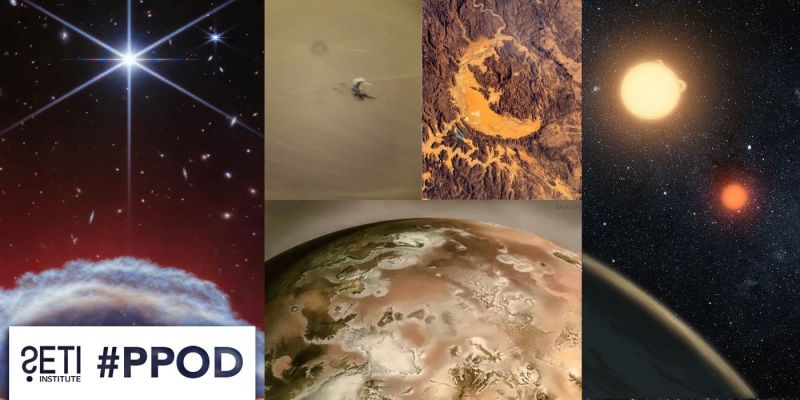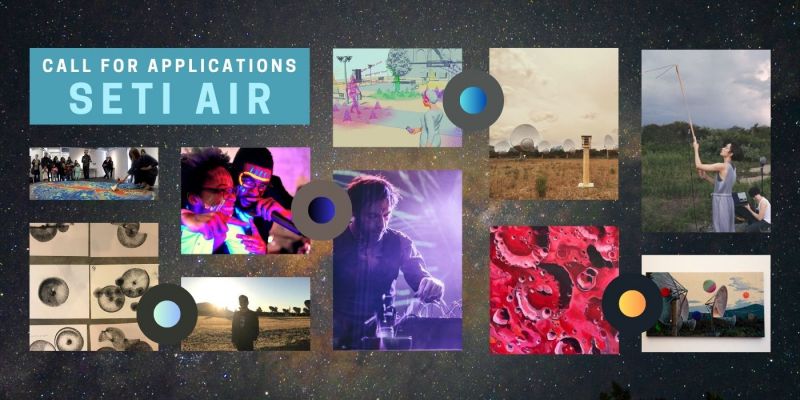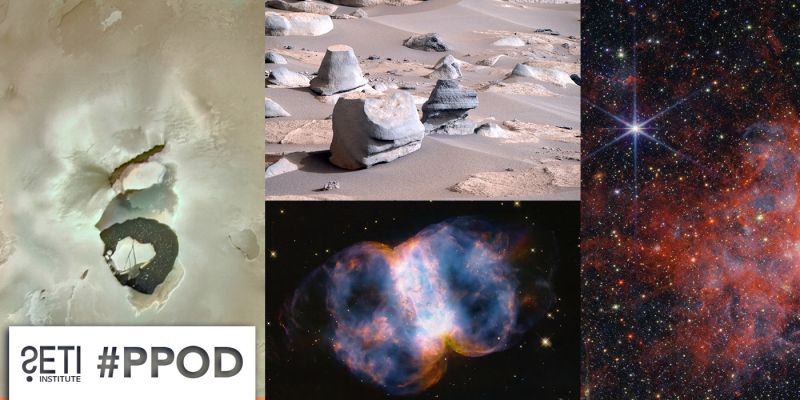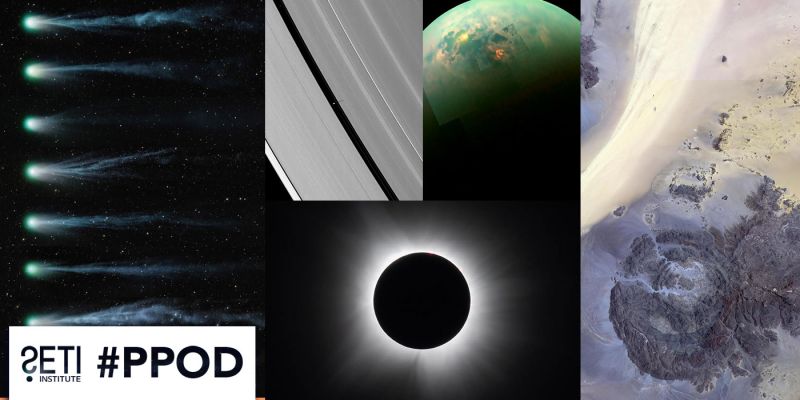Astronomers and amateurs in Mexico, the US, and Canada participated in a rare and exciting opportunity to observe a star while it was occulted by Pluto
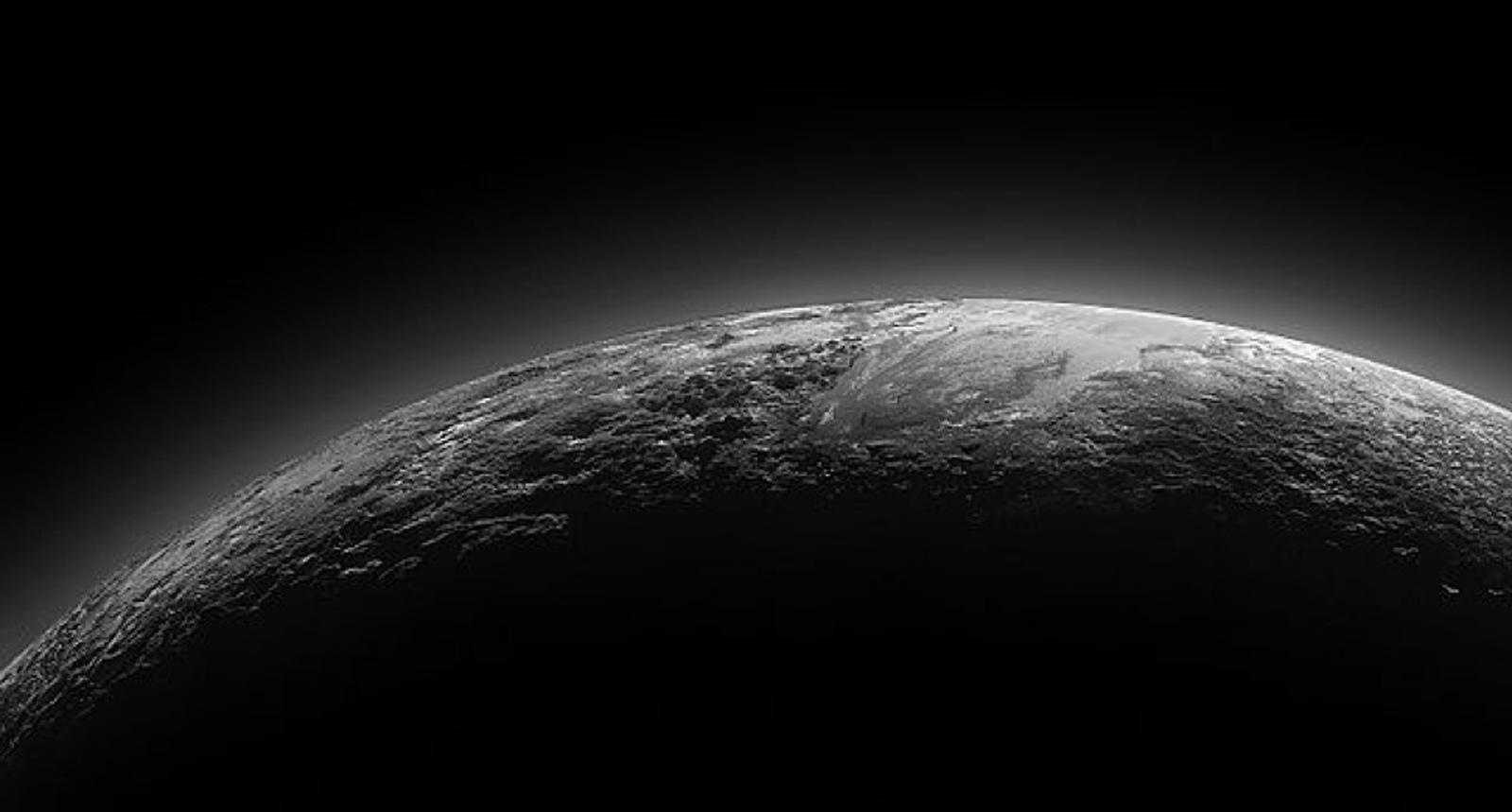
Last Tuesday night, something unusual happened in the world of astronomy. Amateur and professional astronomers in Mexico, the US, and Canada participated in a rare and exciting opportunity to observe a blinking star while Pluto occulted it (an occultation is when one object in space is blocked by another object when the second object passes between the first and the observer). The SETI Institute, the Observatoire de Paris, Unistellar, and Oceanside Photo and Telescope (OPT), one of the largest telescope retailers in the world, gathered in Southern California to observe this occultation and gather precious data needed to understand Pluto’s atmosphere and climate.
Like so many events in the world of modern astronomy, this one started with an email. Back in February, I sent a message to a colleague at the Observatoire de Paris, a message to let them know that the eVscope was ready and able to observe occultations. By then we had already observed our first occultation, by main-belt asteroid 175 Andromache, from the south of France. I wanted to get input from Bruno Sicardy and Josselin Desmars, both astronomers at the Observatoire de Paris, on the quality of the lightcurve we generated that night. Bruno, who replied a few days later, mentioned an intriguing upcoming occultation involving the dwarf planet Pluto. This caught my attention because this type of observation is both more challenging and more rewarding than other occultations. The challenge comes from the fact that the occulted star is fainter than the ones involved in main-belt asteroid occultations (G=13, so almost 3 magnitude fainters than previous occultations observed with the eVscope). The reward comes from the fact that these occultations are the only way to monitor the atmosphere of the dwarf planet Pluto, including its density, pressure, and temperature profile.
I was even more interested because of the context Bruno gave this predicted occultation: Because Pluto is drifting away from the Milky Way, these kinds of occultations are becoming more infrequent, especially with such a bright star (Gaia magnitude G~13). And, as an extra kicker, the last occultation, observed in 2016, suggested that Pluto’s atmosphere may have begun to shrink. Moreover, complex climate models suggest that the nitrogen in Pluto’s atmosphere is coming from a large reservoir of icy nitrogen named Sputnik Planitia, a very bright area of Pluto, which is now cooling down because of the planet’s orientation with respect to the sun. In short, by combining high-resolution images from the New Horizons spacecraft, with past studies of Pluto’s atmosphere, meteorological astronomers think that they are beginning to understand the climate of this exotic icy world located 7.5 billion kilometers from Earth. This occultation could be the key needed to validate one of their models and predict the evolution of Pluto’s atmosphere and its long-term climate.
Beginning in April 2018, when I visited the team at the Observatoire, we knew the occultation would be visible from an area that stretched from Mexico to the US and part of Canada, but occultation’s limits were quite fuzzy. This preliminary prediction was dramatically refined when the European Space Agency’s (ESA) Gaia mission released its second catalog in April 2018 (DR2). Included among the 1.3 billion star coordinates was an accurate position of the occulted star ID 6772629170525258240. Using this new position and an orbital model of the Pluto-Charon binary system, the team refined the path of the occultation with an uncertainty of ~60 km, and a timing of less 10s.
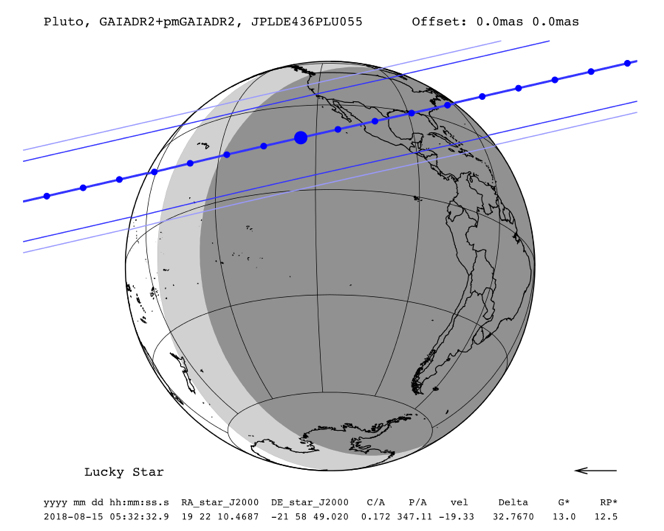
We agreed that it was time to mobilize the troops and started contacting professional and amateur astronomers who have worked together on observing campaigns. Because our goal was to have an accurate snapshot of Pluto’s atmosphere, we knew we needed multi-telescope measurements from stations located along the entire path of the occultation. Additionally, stations located near the occultation’s center, which stretched along a line from Cabo San Lucas in Baja California to New Orleans, Louisiana, and all the way to Atlantic City, New Jersey, would also detect the central flash that is caused by the bending of the star’s light by Pluto’s atmosphere. This flash is a gold mine of data for astronomers because it can tell us about the existence of low-altitude winds and hazes, as well as the distortion of Pluto’s atmosphere.
Several amateur and professional astronomers in California, Arizona, Texas, Louisiana, Indiana, and North Carolina committed to participate in the campaign using their own instruments, and the Observatoire de Paris sent occultation kits to some that included a computer, GPS, and a camera. They also sent their own crew of observers, among them, Stefan Renner and Jossellin Desmars in California.
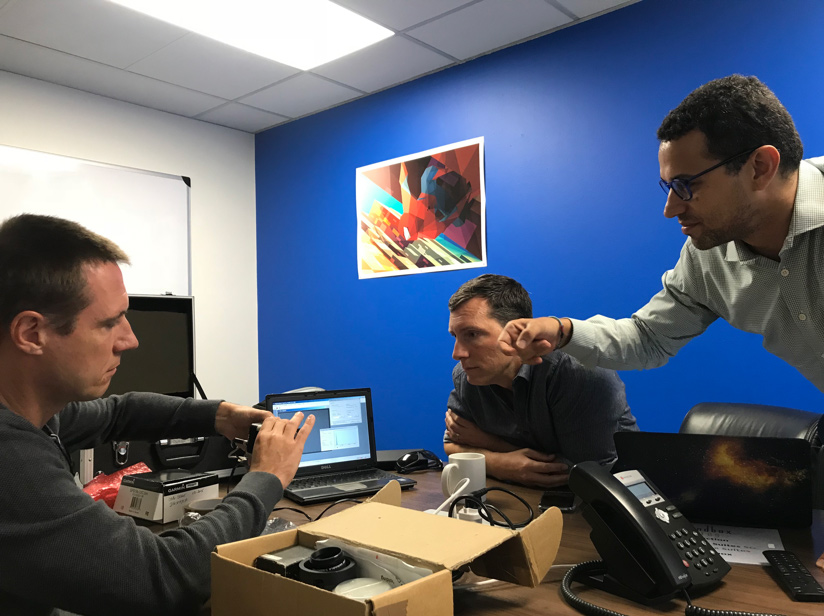
Earlier this year I met Chris Hendren, Director of Education at OPT, at the Unistellar booth at the Consumer Electronics Show (CES). We discussed our interest in education and the many ways in which ProAm and the eVscope could collaborate in the future. Naturally, I contacted Chris and his team to suggest that we form a station that used one of his telescopes and an eVscope to observe the occultation simultaneously. Chris confirmed that OPT was interested in working with us and would provide a large telescope, while the Observatoire de Paris contributed an EMCCD camera, a highly sensitive instrument.
For my observation, I decided to escape San Francisco’s wonderful but often frustrating Karl The Fog, which blankets our beautiful city with natural air conditioning but also hides the stars, and traveled south to San Diego to maximize our chance to collect data with our eVscope prototype and to meet a large team of ProAm (professional and amateur) astronomers.
We met at Lake Henshaw Overlook, a scenic place famous for beautiful views and dark night skies. A diverse team made up of employees from OPT (Chris Hendren, Ian Lauer, Blake Estes, Rod Gallardy), a PhD student from the Observatoire de Paris (Joana Oliveira Marques), a reporter from Planetary Radio (Mat Kaplan), a SETI Institute lab assistant (Martin Costa), and myself met at the overlook on August 14 at 7 pm. We quickly setup our stations, with Unistellar’s eVscope prototype operated by Martin and me on one side and a Celestron C14 equipped with an EMCCD camera managed by Joana and the OPT crew on the other. This was truly a ProAm collaboration that included skilled workers from the worlds of academic research and for-profit companies.
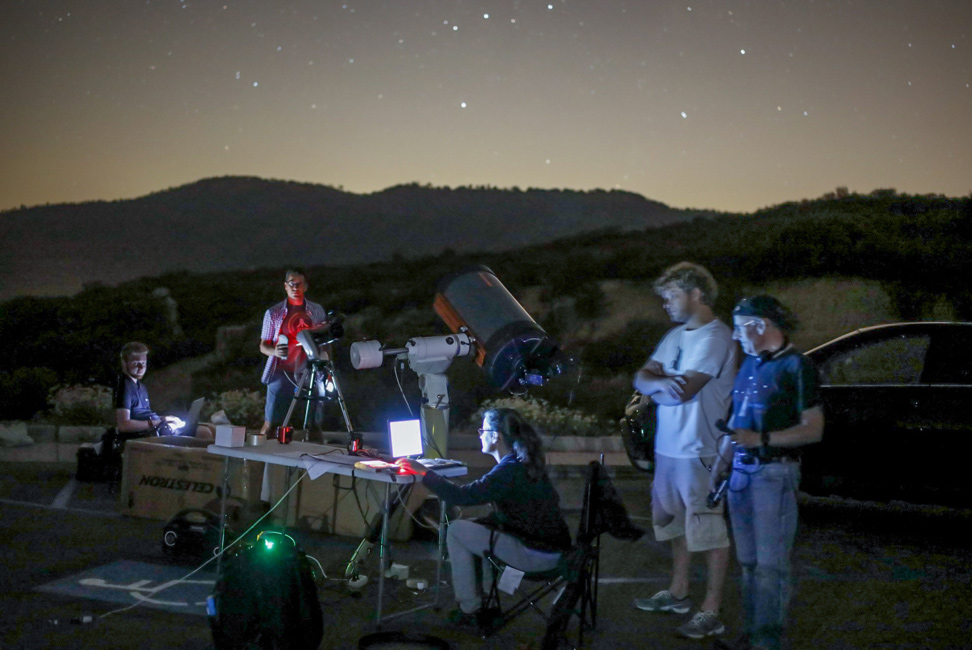
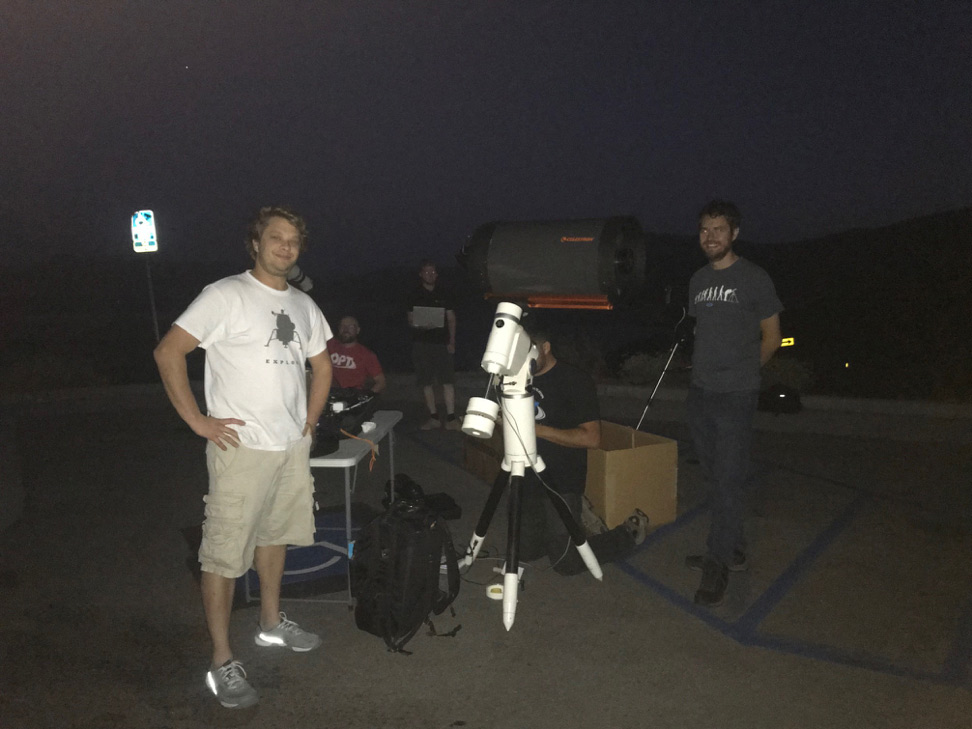
The night was warm and the sky perfectly clear. We had enough time to check and recheck our instruments to make sure that everything would be working when the time came. The Unistellar team used the eVscope’s Automatic Field Detection to point toward the star’s field of view and ran some tests. A few minutes before the predicted occultation time, both teams were ready and we began recording.
Time passed… We were staring at the EMCCD camera’s screen and growing fearful that something had gone wrong because it was not obvious that the star was disappearing as expected. In fact, as the video from the eVscope shows, it did happen—but we had underestimated the fact that Pluto is only ~1.5 magnitude fainter than the star, so it was still visible with the powerful EMCCD camera.
Watch the video of the Processed images taken with an exposure time of 1s with the eVscope prototype. The red circle indicates the position of the occulted star and Pluto.
With relief, we stopped worrying and enjoyed the moment. We had succeeded in capturing this event and possibly contributing to scientific understanding of a very distant world. Some of us traveled from far away to witness this tiny blinking of a star, so it was time to pause and savor the feeling of a successful night under the stars.
Because we are all connected in our modern world, this moment of success was quickly amplified. Shortly after the event, my phone started beeping with notifications from other stations that had also captured the event. Some reported the detection of the central flash, while others were not as lucky because of technical issues or poor weather.
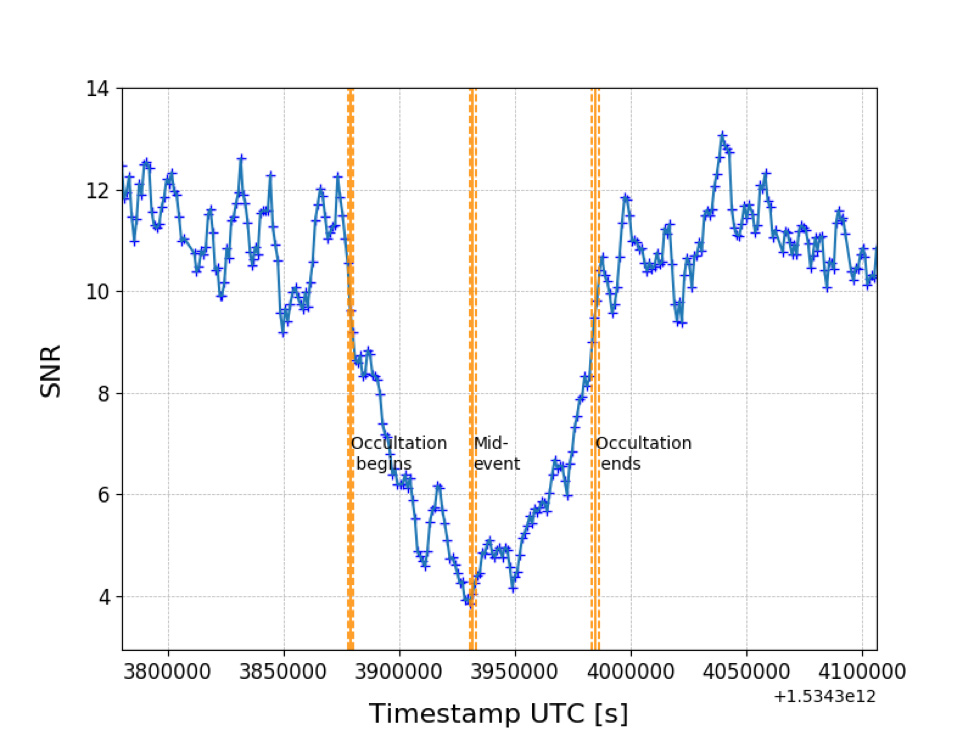
The Unistellar team in France quickly processed the eVscope’s data and confirmed that we had indeed captured the occultation. The preliminary lightcurve shows the presence of the atmosphere because of the gradual disappearance and reappearance of the star and confirms that the timing of the occultation was within the 10s accuracy.
The team of astronomers working together that night will combine all of their lightcurves to draw conclusions about the current state of Pluto’s atmosphere. But we already know that the night was a success for Unistellar in that we validated the potential of our mighty prototype to observe astronomical events. Unistellar’s goal is to democratize astronomy and allow all users in the future to participate in important scientific events. This was a useful rehearsal because we confirmed the capabilities of the telescope, but also embedded our efforts within the context of a large community of ProAm collaborations.
On a personal note, I always feel the thrill of doing something unique and magical when I participate in this type of event. The preparation, the journey to an unknown place, the stress of setting up equipment is probably part of it. As an astronomer, this is a part of my job that I love. As a human being, it reminds me that I am lucky to have the opportunity to be part of something unimaginably bigger than me… the entire Universe.

